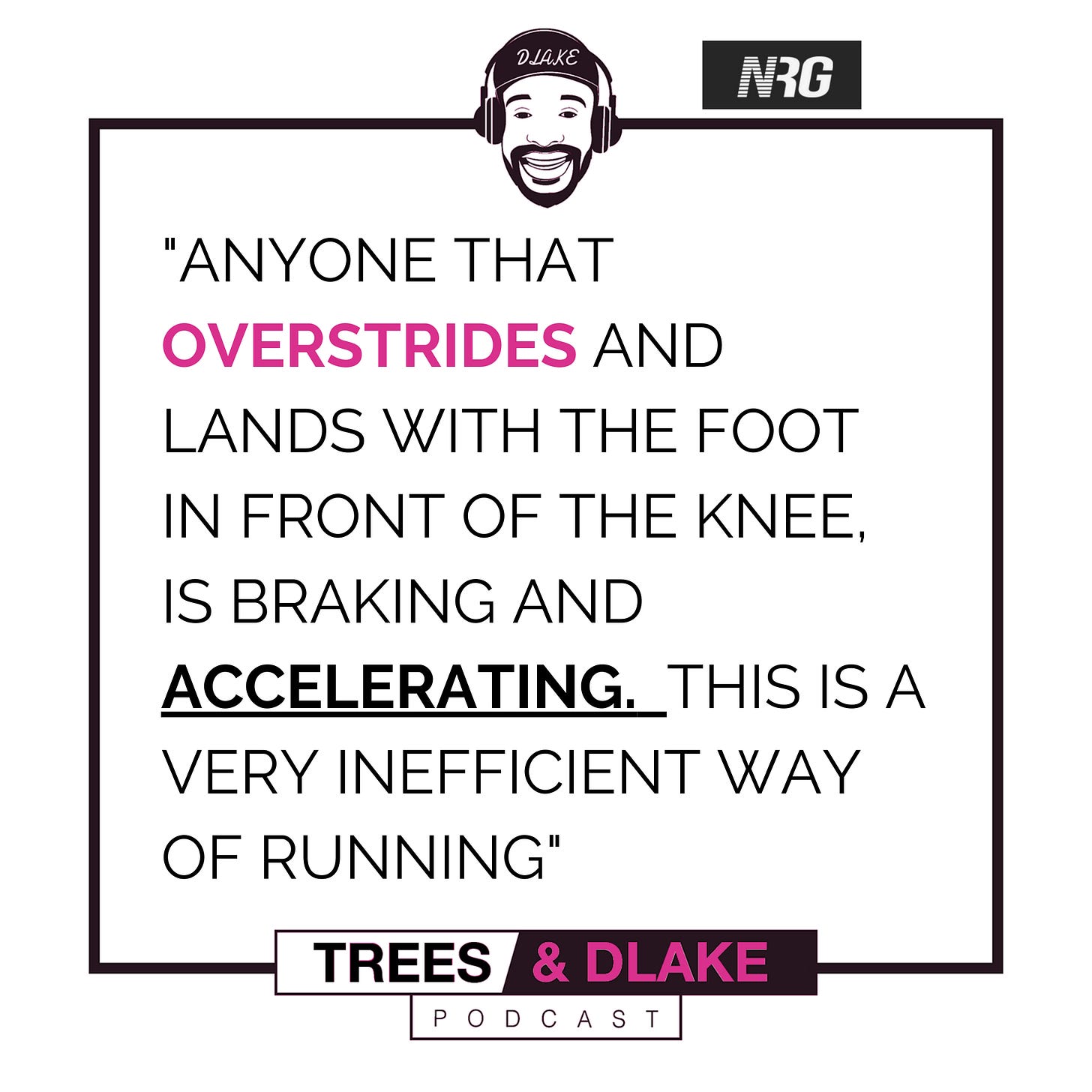Goggins Says "Stop Enjoying Your Runs If You Want to Get Better"
6 Run Form Tips & Pacing someone to a sub-3-hour marathon
🧠 The Science of Grit: How Runners Can Build Unstoppable Toughness
🏃🏽♂️What Is Perfect Running Form? 6 Technique Tips For Faster Running
🥇Pacing Someone To Run a Sub-three-hour Marathon (My Training Update)
🧠 The Science of Grit: How Runners Can Build Unstoppable Toughness
Right now, I’m on this David Goggins kick. Yeah, I’m seven years late; I assumed I knew everything in his book from his social media, and yeah, I was wrong. I think the dude is a great example of consistency, grit, planning, and execution despite talent. The skill comes with the reps, which is exactly like most things, and running is not excluded.
I have a theory as to why so many people, and in particular runners, are attracted to him (or annoyed because whatever it is is the reason people love and also hate him). Most people want whatever natural high he’s on. Entrepreneur and rap theme song maker Jesse Itzler did it by having him stay at his house for a month. I’m trying to figure out what his secret sauce is by reading and listening to a bunch of content that he’s done or been on (podcasts, videos, etc.)
But neuroscientist and podcast GOAT Andrew might have figured out what the real reason for his drive is when Goggins was on his show.
The secret? The Anterior MidCingulate Cortex (aMCC).
Obviously with Huberman being a neuroscientist he tried to properly break this down from a scientific pov, but there is a lot to be learned for someone (you a runner) that might not care about the details of what’s happening inside of our heads.
What is the Anterior Midcingulate Cortex (aMCC)?
It’s the brain’s “grit center.” It grows when doing hard unpleasant tasks that you don’t want to do. That’s the key. It does not grow when you do hard things that you like doing. If you love cold plunges, you don’t grow the aMCC. If you love running easy runs, you don’t grow the aMCC. You have to really not like or even hate what you don’t grow it. Sounds like a life of suffering, right? That’s the point. No one escapes without internal suffering you caused preemptively or external suffering caused by living a lazy life.
Why is strengthening this area crucial for runners?
It builds willpower, and improves mental toughness and your adaptability for running and life challenges. It’s like when you have a hill workout schedule to help improve your anaerobic capacity early in the season. You hate hills, so you want to skip it in favor of a tempo run, thinking since a tempo run is hard (but fun), what’s the difference, right?
First, you won’t get the physiological adaptations from the programmed workout of hill sprints. Second, you won’t build your aMCC because you don’t want to do it. We all know what it feels like to have resistance and not want to do something. That’s when you have to push through. You must.
How can you train it intentionally?
Easy in theory, hard in practice — Just pick things that make you hesitate or wince, but you know you have to do it. Hate doing calf raises because they take longer than you would like and feel uncomfortable, but you know you need to rehab your achilles tendon? Well, you gotta do them. Ryan Holiday had it right all along with his book - The Obstacle Is the Way.
When should you incorporate hard tasks?
Starting now and moving forward, I think you should do one thing that sucks every day. No days off from that. Now, the definition of something sucking could be physical or mental. It also is usually exactly what you need to do. I know I should be walking and rucking one day per week instead of constantly running. But I like running, and while walking and rucking are easier on my body because it’s great for recovery, I should do it.
How long does it take to see results?
It takes gradual growth through steady and consistent exposure to 💩y things. Studies suggest that the neuroplasticity for the aMCC to grow takes weeks and months. You also have to sustain it by resetting your baseline for said suck. Find things that are even more challenging if you start liking the suck of one thing or make it suck more. It’s habitual, dull, boring practice over a long period of time — like off-season base training, but for your brain.
🏃🏽♂️What Is Perfect Running Form? 6 Technique Tips For Faster Running
I used to obsess over my own running form, constantly thinking, ‘Do I look like I know what I’m doing?’ But then I realized running isn’t a beauty contest. It’s about efficiency—what works for your body, not someone else’s. In this episode, I’ll help you figure out what that means for you so you can run smoother, faster, and with way less stress.
What You’ll Learn
What running form actually is—because it’s not about looking good.
How to get it right without overthinking.
Why it’s the key to running better, longer, and with fewer injuries.
And I’ll give you six practical fixes ranging from a foot strike, posture, arm swing, breathing, stride length cadence, and more! you can start using it right now to level up your form.
Watch, read and listen on your next run or workout to all six tips here.
🥇Pacing Someone To Run a Sub-three-hour Marathon (My Training Update)
I haven’t updated this section of the newsletter for a while. I like to walk the walk, and I respect folks who do the thing and also talk about the thing. If a business person or marketer doesn’t actually have a business or do marketing…. I’m a bit suspicious of them. The same goes for overweight doctors… I can’t really trust their advice if they aren’t living that balanced and wholistic 1% better life.
So, if I’m going to advise about marathons, training, habits, etc I need to be showing you that I’m at least trying to do it. I have proof every day that I walk the walk if you follow my strava, but strava only shows what work was done (lagging measure), not the work that I’m planning (leading measure).
The new work that I’m planning is pacing someone to run a sub-three-hour marathon. We are running Ballarat in rural Victoria, Australia, which is about an hour's drive from Melbourne. It’s a super flat two-lap course that is a small field (just the way I like it.)
I'm not sure if I’ll run the first half, then walk, rest, and finish the last 10 km/6 miles with him. Or if I’ll do the whole thing. The risk with doing the whole marathon is that I haven’t touched that distance in seven years, and when I did, it wasn’t pretty.
But the only way I’ll find out is by testing the limits. I’ll keep updating this section as the weeks tick over, or if you don’t already, follow me on Strava to see the real world.
I’m doing a condensed aerobic base cross-training phase while my body adapts to the higher volume of running.
To experience real long-lasting pleasure, you have to experience the pain. There’s no shortcuts to this… yet.
- Andrew Huberman






I love Goggins! I am visiting south Texas from PA and I was going to do a sandbag workout in the cold rain today, but I talked myself out of it. Thanks for the suggestion to do one thing that sucks every day. I am going to take that challenge!